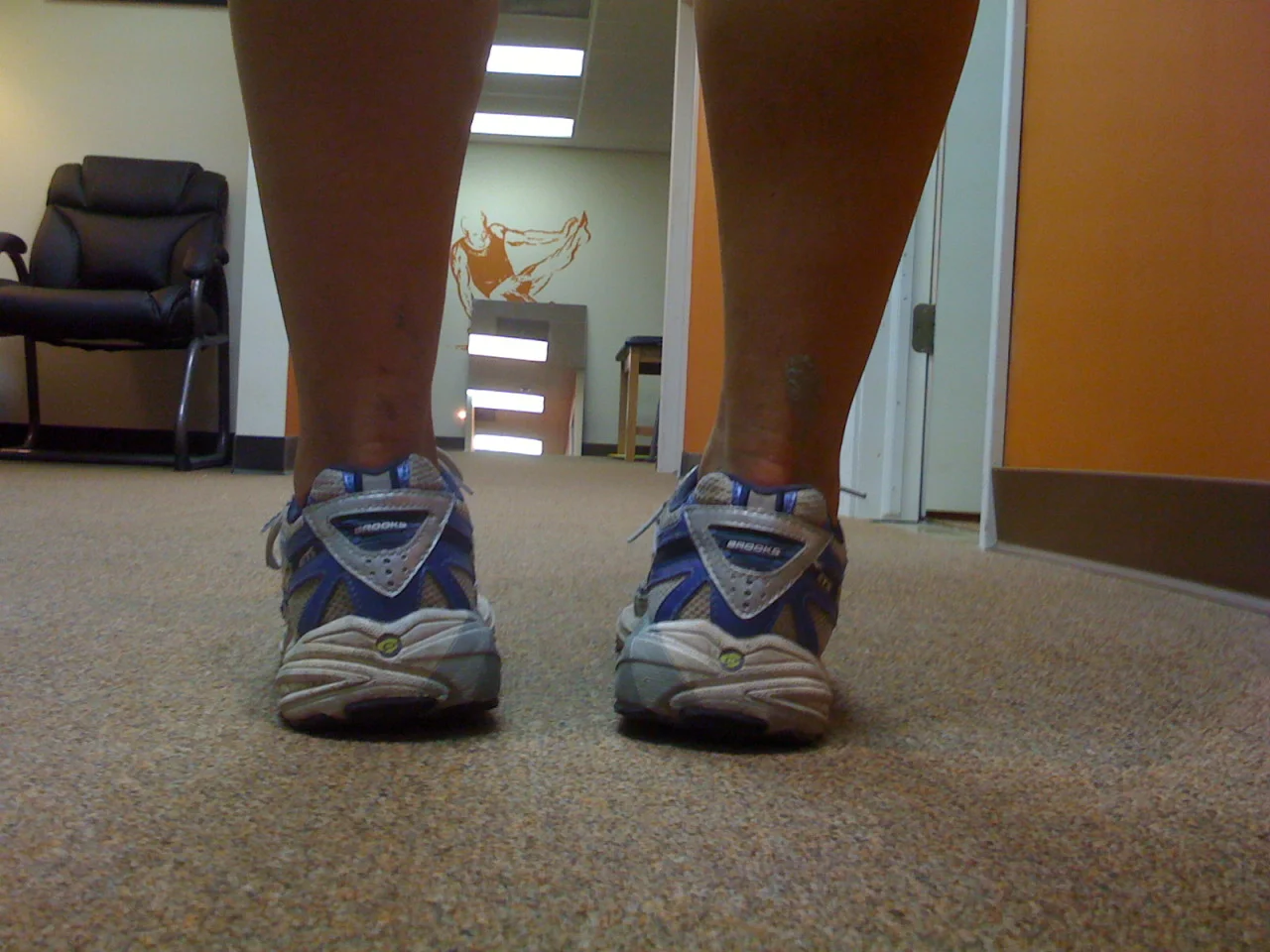The following question was forwarded to us from an internist on the USA east coast.
Question:
“I have a large number of female patients, many of them elderly. I have noted that women in our society tend to progress to valgus knee deformity with age, and that TKR (total knee replacement) doesn’t seem to correct that deformity. Men tend more to the varus in our society. I had formerly chalked that up to inherit gender difference.
3 or 4 years ago, I had occasion to spend a lot of time waiting outside the main Tokyo train station and observed a large number of people coming and going. I observed the following:
1. Young women had legs that were either straight or varus.
2. Young women tended toward toeing in.
3. They did all this in ridiculous high heels.
After some thought, I tend to attribute it to prolonged sitting in sesa (knees folded under), though being barefoot or in slippers while inside may also contribute. Women in our society sit with their legs crossed. Additionally, extensive shoe wearing leads to foot pronation.
So, could you direct me to someone who might have an interest in this observation and can refer me to any research that might have been done in this area? I’ve had the dickens of a time trying to find anything on it, or even a specialized area of study that cares about such things.”
The GAIT GUYS RESPONSE:
Thanks for your confidence in us. Here are some thoughts:
Frontal plane deformities (or development) is twofold: genetic (and X linked) and developmental. Children usually go through a varus to straight to valgus to straight development (Ron Valmassey talks about this in his text Clinical Biomechanics of the Lower Extremities). Women generally have larger Q angles (from birth) and this angulation often causes assymetrical epiphyseal development (increased pressure on the lateral malleolus/tibial plateau stunts growth) with overgrowth of the medial femoral condyle. Developmental changes are secondary to weight (obesity causes increase in valgus angle) and posture/muscular devlopment. The increased genu valgus places weight medial to the midline (2nd met) of the foot and the foot accomodates by pronating (often excessively, as noted by both of you). This causes medial rotation of the lower leg and thigh, resulting in lengthening of the glutes (esp G max) resulting in stretch weakness and subsequent over reliance on the gastroc/soleus group for propulsion (remember this group tries to invert the heel in an attempt to cause supination once you go past midstance. Weak intrinsics (as pointed out by Dr Mark) further fuels this cycle. “W” sitting (sometimes a cultural development, as pointed out by Dr Birgit) plays in as well.
As for “toeing in”; may women have the combination of genu valgus with internal tibial torsion (often with femoral retroversion) which makes the condition difficult to treat (the rearfoot needs to be supported, but the forefoot needs to be valgus posted) otherwise the knee is placed outside the saggital plane and the meniscus becomes macerated due to conflicting biomechanics at the knee (Thus the short term fix with orthotics with a return of the pain later).
Yes, high heels and open back shoes are evil as are open backed shoes (we spoke at a convention in Chicago a few years back on this, before some of the research was out).
Thanks for allowing us to participate. below are some references for you.
-The GAIT GUYS…….Ivo and Shawn
______________________________________________________________
J Orthop Sports Phys Ther. 2008 Mar;38(3):137-49.
Differences in lower extremity anatomical and postural characteristics in males and females between maturation groups.
Shultz SJ,
Nguyen AD,
Schmitz RJ.
Source
Applied Neuromechanics Research Laboratory, Department of Exercise and Sport Science, University of North Carolina at Greensboro, 1408 Walker Ave., Greensboro, NC 27402, USA. sjshultz@uncg.edu
RESULTS:
When comparing maturation groups, limb length, pelvic angle, and tibial torsion increased with maturation, and anterior knee laxity, genu recurvatum, tibiofemoral angle, and foot pronation decreased with maturation. Females had greater general joint laxity, hip anteversion, and tibiofemoral angles, and shorter femur and tibial lengths than males, regardless of maturation group. Maturational changes in knee laxity and quadriceps angles were sex dependent.
CONCLUSIONS:
We observed a general change of posture with maturation that began with greater knee valgus, knee recurvatum, and foot pronation in MatGrp1, then moved toward a relative straightening and external rotation of the knee, and supination of the foot in later maturation groups. While the majority of the measures changed similarly in males and females across maturation groups, decreases in quadriceps angles and anterior knee laxity were greater in males compared to females, and females were observed to have a more inwardly rotated hip and valgus knee posture, compared to males, particularly in later maturation groups.
PMID: 18383647 [PubMed - indexed for MEDLINE]
_______________________________________________________________________
J Bone Joint Surg Br. 1995 Sep;77(5):729-32.
Development of the clinical tibiofemoral angle in normal adolescents. A study of 427 normal subjects from 10 to 16 years of age.
Cahuzac JP, Vardon D, Sales de Gauzy J.
Source
Centre Hospitalier Universitaire de Toulouse-Purpan, France.
Abstract
We measured the clinical tibiofemoral (TF) angle and the intercondylar (IC) or intermalleolar (IM) distance in 427 normal European children (212 male and 215 female) aged from 10 to 16 years. In our study, girls had a constant valgus (5.5 degrees) and displayed an IM distance of < 8 cm or an IC distance of < 4 cm. By contrast, boys had a varus evolution (4.4 degrees) during the last two years of growth and displayed an IM distance of < 4 cm or an IC distance of < 5 cm. Values above these for genu varum or genu valgum may require careful follow-up and evaluation.



















